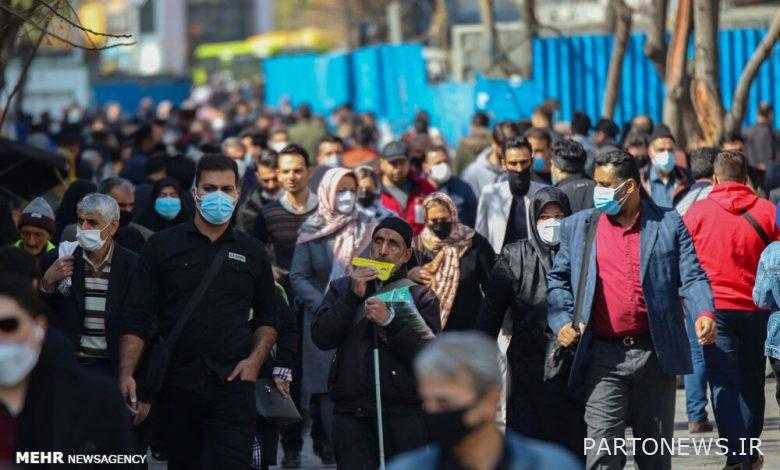Population Youth Law; From approval to comprehensive support of the family – Mehr News Agency | Iran and world’s news

Mehr news agency, Community Group_ Fatemeh Mirza Jafari: Family support and youth population; It is the title of a law that was approved by the parliament according to Article 85 of the Constitution after the approval of the parliament. Mothers have been provided with banking facilities by their families, and maternity leave has been granted to working women.
This law is to increase the growth rate of the country’s population, which has reached a maximum of 0.7 percent today, and the continuation of this downward decline in the population rate can have many social consequences; Population aging can also cause problems in the economic sphere, the reduction of labor is one of the most important problems for the economy in the nature of population aging.
In a program entitled “Silent Crisis” which was held on the radio with the participation of Mehr News Agency and the presence of Sahar Mansouri, Advisor to the Population Commission, Amir Hossein Bankipour, Chairman of the Joint Youth Plan Commission of the Islamic Consultative Assembly and Mohammad Seyed Mirzaei, Demographer , The various dimensions of the adoption of the Youth Population Law and family protection and its various dimensions were discussed, which is described below.
Decreased fertility rate in 1998
First, Sahar Mansouri, advisor to the Population Commission, started the discussion by explaining how the population youth law was passed and its functions, saying: It started from the beginning of the work of this parliament and was approved by the deputies in March 2010 and became law on 07/24/1400.
This law is a 74-article law that includes various aspects of family discussion, family protection, facilitating childbearing, and population growth. He added: “This law is a 74-article law that includes various aspects of family discussion, family protection, facilitating childbearing and increasing the population; Of course, in the past, we may have discussed marriage facilities and attention to pregnant mothers in previous laws, but this law takes a multifaceted look at issues that are effective in strengthening the family, such as childbearing, youth problems, housing, and actions taken by institutions and organizations. Different has acted in any way on these problems can be effective.
Regarding the main purpose of the plan, Mansouri said: “If we want to examine the main purpose of the plan, the quantitative requirements of the population are not considered, so in fact there is a discussion of quantity in this law and it has been considered because there is little discussion about increasing birth rates.” And the issue of population quality is important; For example, one of the arguments of critics of this law is that at present, with a population of 80 million, we have a population commensurate with our country in terms of size and facilities, and there is no need to increase the population, but legislators do not see it this way. We are facing a decline in births and we are going to reduce the population, but perhaps a deeper look at this is the issue of population quality, as you know, if our aging population is seven percent, we are going through aging, if this number is ten percent. Reach means that the population of our country is entering old age.
The advisor of the Population Commission stated: “Unfortunately, we rejected the number ten, and if this number reaches 14, the situation will be worrying; At present, according to the available statistics, this number will reach 20% by 1420. If we continue with the same population trend, it is predicted that in 1435, one third of our country’s population will be elderly, so we will definitely have a decrease in population at this rate. If we want to have a wise look at the future of Iran, we must think today.
He noted: “Although it is still late today and many experts believe that we missed a lot of opportunities, but the passage of this law in parliament is a window of hope that with the proper implementation of this law by the government and the people, this process may be broken.” Change the balance in favor of the country’s issues.
Currently, in the discussion of the average fertility rate, the number of children per woman is of childbearing age. In 1998, it reached 1.7, which means that every Iranian woman does not have an average of two children. Also, 23 provinces of our country have lower birth rates than the replacement level, which means that every man and woman do not have a replacement for themselves. Mansoori said: “Currently, in the discussion of fertility rate, the average number of children per woman is of reproductive age. In 1998, it reached 1.7, which means that every Iranian woman does not have an average of two children. To have less fertility than this, also 23 provinces of our country have lower birth rates than the replacement level, which means that every man and woman do not have a replacement for themselves.
Adviser of the Population Commission stated: One of our strong arms in implementing the population reduction policies of the Ministry of Health and implementing monitoring and instructions based on fewer children was better, but if we want to pursue the opposite policy, the Ministry of Health is still our strong arm because over 30 articles Article 74 of this law obliges the Ministry of Health to perform certain tasks.
He said: “According to research, couples want to have more than two children, which will happen if we remove the obstacles; We have a potential right now and that is the desire to have two or more children in a couple, but despite the obstacles that exist for our working women or students, we can not claim that we want to increase childbearing; At the community level, are our social spaces in favor of pregnant and lactating mothers or not? Do we have facilities to treat infertile couples or not? This law creates the desire to have children by removing these barriers, and more importantly, the discussion of culture is one of the characteristics of this law, this law wants to have a good motherly feeling in a mother, and if the mother is a student and wants to have children, community conditions , The university and the country should allow him and not only not to forbid him but also to increase this desire in him by providing facilities.
Comprehensive support of the population youth law of the family
However, Amir Hossein Bankipour, the head of the Joint Youth Law Commission of the Islamic Consultative Assembly, said regarding the population youth law and family protection: Has predicted and is trying to solve the problem by rooting out each of these cases.
He pointed out that every year we had a sharp decrease in the fertility rate and said: “Considering that we faced a decrease in the fertility rate every year, this law is supposed to stop this decrease and add 0.1 to this rate every year and Reach higher than the replacement rate, and if this law is implemented well, we may reach higher than the desired rate.
Regarding the flaws of ignoring the health of mothers and infants in this law, Bankipour said: The critics of this law typically paid attention to what they heard about ignoring the health of mothers and infants. Not only is this law not endangered, but it is written based on the protection of the health of mother and child and is emphasized in accordance with the scientific standards in the law.

This law is mainly a facility, it also has facilities in the field of health and treatment and now the law states that screening is optional and at the request of one parent and the second with a medical opinion that must be entered in the systems and according to international standards of the Ministry Health should also be monitored The head of the Joint Commission on Youth Population Law said: “This law is mainly a facility, it also has facilities in the field of health and treatment, but the issue that caused stress in pregnant mothers is not following the discussion of pregnancy health in screening that has been implemented in previous years. The Ministry of Health has also stated in its protocols that this issue has many risks; Currently, the law states that screening is optional and is performed at the request of one parent and the other with the medical opinion that must be entered in the systems and must be monitored according to the international standards of the Ministry of Health.
He added: “Unfortunately, in recent years, there have been many irregularities in the discussion of screening, which is likely to eliminate healthy children during these stages, and created false narratives of the law, which led to the idea that this law is discussed. Health has not been considered while the necessary cases have been corrected and it has been determined that the rest of the cases are nothing more than extravagance and have been related to conflicts of interest.
“According to opinion polls, a large majority agreed with the implementation of this law, and our society is interested in removing the conditions, problems, barriers to childbearing and marriage,” Bankipour said.
Regarding executive guarantees, the head of the Joint Commission on Population Youth Law said: “Very strong executive guarantees are seen in this law. The National Population Headquarters, headed by the President, is responsible for coordinating law oversight in the cabinet. If there is a objection, the employee and a higher official will be punished and the parliament will monitor the implementation of the law step by step. And according to this law, no device has the right to put pregnant mothers and children with infants on its force adjustment list.
.

